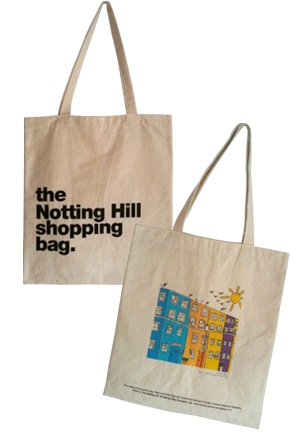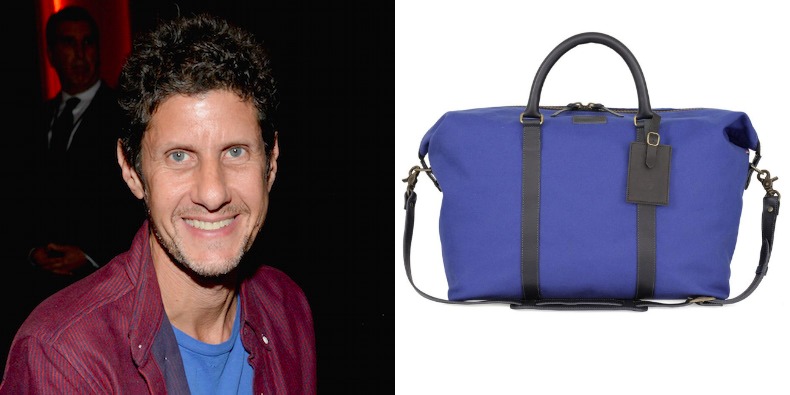There are two main factors influencing demand for promotional totes and bags right now. The first is the growing movement toward a more eco-friendly future, partnered with legislation that outright bans single-use plastic and paper bags. Through either good intentions or lack of choice, people are opting for reusable totes at retail outlets, grocery stores and restaurants.
The other is less a case of cause-and-effect, or at least one as clear as limiting single-use bags leading to more reusable ones. The reasons are harder to pinpoint, but the shift is clear.
“It seems the whole industry has gone more ‘retail,’ to better bags compared to even a year ago, where it was more, I’d say mainstream—like you’d see $2, $3 bags,” said Jeff Mayer, CEO of LBU Inc., Paterson, N.J. “I’d say your higher-ticket items now have easily gone to a $5-plus item, if not a $10- or $20-type bag. I think [companies] are getting smarter. They’re preferring to do a little smaller quantity and better product than a big run and just doing a cheap item giveaway.”
The first thing a lot of people think of when they hear “promotional bags,” especially right now, is the basic cotton tote. Those are still big, and they certainly meet a need for many end-users. But, the bag side of the industry goes far beyond the totes you get at the grocery store or from a radio station pledge drive.
“Sometimes, buying bags with a high-quality material or unique construction can be more beneficial than choosing the least expensive option,” said Maribeth Sandford, CEO of Bag Makers Inc., Union, Ill. “We worked with a distributor who needed a bag with a full-color imprint for a fundraiser. We showed them a popular, small, non-woven tote with a full-color imprint that was within their requested $2 price point. We also suggested the Izzy Cotton/Jute Bag—a high-end option featuring a wood button closure, pocket and full lamination for easy cleaning.”
All those bells and whistles, as well as the decoration, put the Izzy’s price point a little higher than the distributor might have initially wanted when they came to Bag Makers. But the “wow factor” and high perceived value yielded a better outcome at the fundraiser than a more basic bag would have. This highlights the growing appeal of retail features in the bags category.
Here are a few more things to keep in mind as you work on bag orders for your customers.
Decoration Details
There’s more to a quality promotional bag than material and construction. At the end of the day, the purpose of the bag is to showcase your client’s logo and create a positive impression of their brand. Asking the right questions about imprint capability is just as important as asking what the bag is actually made of. When asked about what materials and constructions are currently popular in promotional bags, Mayer’s first answer was actually about printing.
“I would say there’s very big demand for full-color dye sublimation, which is obviously a printing technique,” he said. “Why print a one- or two-color logo on something that’s a stock item sitting on a shelf, when we can start from scratch and actually build the whole product while it’s in a cut-panel form, and fully decorate in four-color process, edge to edge, top to bottom, and then build the product? Now you have this gorgeous moving billboard, as opposed to taking a logo and slapping a one- or two-color print on it.”

Understand Your Client’s Identity
With so much variety within the bags category, the responsibility falls on the distributor to understand customers’ branding and their goals for a given bag promotion. Think of each type of bag as a different tool that accomplishes a specific task other bags may not. If you know the demographics your customer is targeting and understand their brand front-to-back, you can take that information to a supplier to tailor-make a promotional solution.
“Say I’m working with a client in the hospitality industry, and they tell me it’s going to be for a Ritz Carlton-type property,” Mayer said. “[The bag] is going to be left in the room for all their people who are checking into the high-end suites. It might be $800-plus a night, and they want a beautiful bag they can take down to the pool or to the beach. What are my recommendations? Once I hear the type of client in my head and I get the demographics—in this case, it’s going to be a bit of an older crowd, probably aging from 30 to 65, wealthier, high-end clients.”
His instinct would be a heavy canvas tote bag with a gold lamé bottom and shiny gold leather matching handles. It would have an imprinted gold foil “R” (or whatever the company’s logo might be).
“When I talk to my clients, I never sound and I never feel like I’m a salesman—I feel like I’m Dr. Oz and I’m talking to my patients,” Mayer said. “Everyone who calls in every day, they have some form of, let’s call it an ‘ailment.’ They have a need. What my job is after 33 years of doing this, and all of my team members who have trained under me for years, is to really listen … and get all that information.”

Uncertain Times, Certain Solutions
The COVID-19 pandemic has wildly shifted the landscape of the promotional products industry, as in-person events went virtual, sports arenas locked their gates, restaurants closed and the travel industry screeched to a halt. With vaccine rollout underway, a return to business-as-usual (or something close to it) is coming. But the heightened safety measures brought on by the pandemic will likely remain in place for some time.
“Bags quickly became a new necessity to help keep things clean, sanitized and safely packaged,” Sandford said. “For example, the pandemic caused a surge in restaurant and grocery delivery that spurred demand for bags that can zip or seal, like our Grab and Go Bags, or that keep contents hot or cold, like our insulated totes. Affordable bags that can hold large containers, like our Brute Paper Shopper with a 10” gusset, also began trending. School lunch programs continued even when schools were closed. Schools relied on products like S.O.S. Bags and smaller paper shoppers to individually package and distribute meals
to students.”
In client-facing industries like travel and hospitality, bags became a way to earn trust and showcase commitment to safety.
“Everybody needed masks, they needed hand sanitizer, they needed wipes, they were [wearing] gloves,” Mayer said. “As hotels and more travel [open] up, when you check into these properties or some of these airlines, instead of handing you all the separate pieces, [they’re] putting them in a gorgeous case that’s going to be reused as a travel case at any point. But inside would be those four components. So, it’s a great vehicle to make a nice presentation with and have a lot of fun with on the actual case itself. On the backside of many of them, you have some of the precautionary measures that the property of whoever was taking. Then, on the front of it, you’d have beautiful full-decoration of the client or the property that was going on as a nice souvenir-type item.”

More Than Just Storage
In recent years, there’s been a collective focus in the promotional products industry on distancing itself from the perception that it’s all “trinkets and trash.” Part of that is moving away from one-size-fits all solutions and throwaway items. The bags side of the industry is a perfect representation of this. Customers want quality over just quantity. They want bags that allow them to live a little greener and stay safe during troubling times. While a customer’s first instinct may be to think of a basic bag for nothing more than carrying, distributors have a great deal of opportunity to deliver something that not only showcases a client’s brand in a grander way, but also fulfills a need for years to come.



